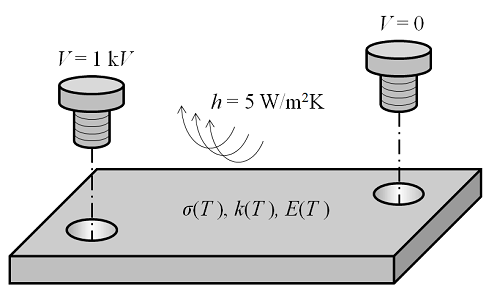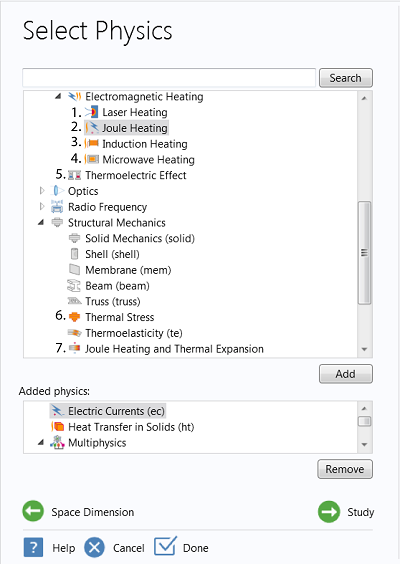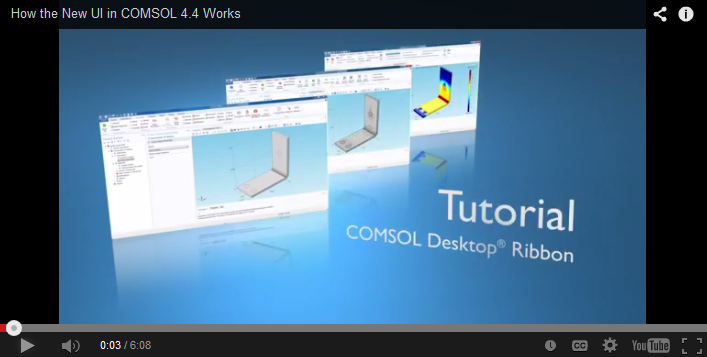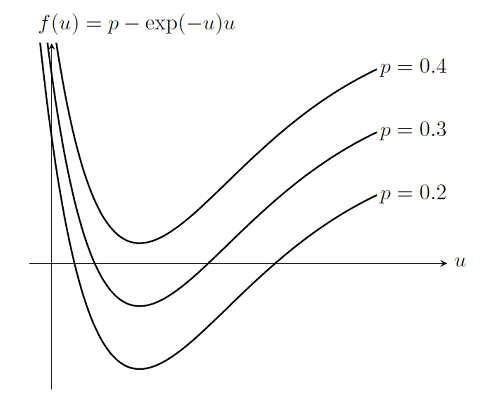Search Results

Solving Multiphysics Problems
Here we introduce the two classes of algorithms used to solve multiphysics finite element problems in COMSOL Multiphysics. So far, we’ve learned how to mesh and solve linear and nonlinear single-physics finite element problems, but have not yet considered what happens when there are multiple different interdependent physics being solved within the same domain.

2D Materials, It’s Not Just About Graphene
You’ve heard the story: a couple of scientists discovered graphene when they repeatedly pulled a strip of adhesive tape off a layer of graphite. Graphene has been all the rage due to its incredible strength, low weight, and electronic properties, but it’s not the only material of its kind. There are plenty of other 2D materials to consider for electrical applications — some of which may work together with graphene, and others that can be used in its place.

3D Printing: Material Matters
In the past, we’ve discussed a few of the extraordinary uses of 3D printing (or additive manufacturing) technology by some innovative engineers, and even printed a few of our COMSOL models. In one of our previous posts on 3D printing, we discussed some of the limitations that this technique poses from both a consumer and manufacturing stand-point — you can only print one material at a time. Now however, as was mentioned in an article in Desktop Engineering, not only […]

Dedicated Multiphysics Node Introduced in COMSOL 4.4
To make it easier and more transparent to define models involving multiple physics phenomena in COMSOL, a separate Multiphysics node has been added as a new feature in COMSOL version 4.4. The Multiphysics node gives you control over the couplings for thermal stress and electromagnetic thermal effects involved in your models. Future versions will include further multiphysics couplings through the Multiphysics node in addition to the multiphysics couplings methods already available since previous versions.

Video Tutorial: Introducing the New User Interface in COMSOL 4.4
Each COMSOL release aims to create a better modeling experience for our users, usually in the form of new add-on modules and new functionality in existing products. COMSOL 4.4 brings you all that, but it also includes another significant change: a brand new user interface (UI). The new UI contains a ribbon at the top of the interface (for our Windows® users) to make your modeling easier and faster. The ribbon gives you direct access to the functions you would […]

COMSOL Multiphysics Version 4.4 Released Today
You’ve seen glimpses of our new software release at the COMSOL Conference and perhaps engaged in commentary around it in social media. Today marks the official release of COMSOL Multiphysics version 4.4, and you can now learn about the software updates in detail and download it if you are on subscription.

The Next Generation of Moore’s Law
At the COMSOL Conference in Boston, Lam Research Corporation held a keynote talk about Moore’s law and its role in computational modeling. The keynote touched on how Moore’s law has not only impacted the advancement of simulation tools, but also how the development of these tools have themselves allowed Moore’s law to hold true. The concept was something that interested me, and I know it’s been on the minds of many electrical engineers as well. Case in point, when browsing […]

Load Ramping of Nonlinear Problems
As we saw previously in the blog entry on Solving Nonlinear Static Finite Element Problems, not all nonlinear problems will be solvable via the damped Newton-Raphson method. In particular, choosing an improper initial condition or setting up a problem without a solution will simply cause the nonlinear solver to continue iterating without converging. Here we introduce a more robust approach to solving nonlinear problems.
